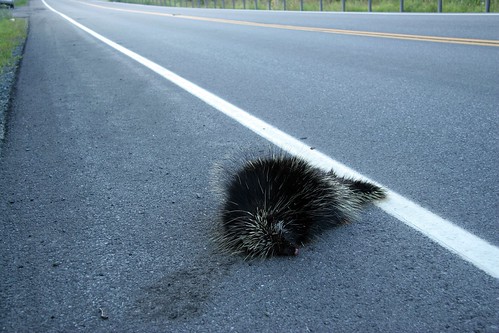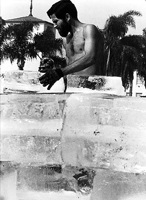 d of the term and my project is nearing completion, but really there is a lot left to accomplish. I want to try to finish it at the beginning of this week so I can really hone and polish it into a great finished project and also have time to experiment with some promotional options. So, this week I made the layout for my accompanying book and I am in the midst of creating an account and sending it to lulu.com to get my book published so I can see how it looks and have a copy for our presentation. This layout process was a lot more daunting that I imagined. You can really get finicky with Adobe InDesign, I guess. The weather was no help, but I got motivated to start and finish my book layout with only a few very late nights to finish it off. A lot of what I did was to film (actually not the right word technically speaking) the majority of the core scenes that I had left to shoot and then I used specific scenes to represent my narratives in the book. I exported those still frame
d of the term and my project is nearing completion, but really there is a lot left to accomplish. I want to try to finish it at the beginning of this week so I can really hone and polish it into a great finished project and also have time to experiment with some promotional options. So, this week I made the layout for my accompanying book and I am in the midst of creating an account and sending it to lulu.com to get my book published so I can see how it looks and have a copy for our presentation. This layout process was a lot more daunting that I imagined. You can really get finicky with Adobe InDesign, I guess. The weather was no help, but I got motivated to start and finish my book layout with only a few very late nights to finish it off. A lot of what I did was to film (actually not the right word technically speaking) the majority of the core scenes that I had left to shoot and then I used specific scenes to represent my narratives in the book. I exported those still frame s from final cut, touched them up and formatted them in Photoshop and then imported them into my book layout.
s from final cut, touched them up and formatted them in Photoshop and then imported them into my book layout.That was enough decision making, and then the layout was infinitely more... do I want a different font, do I want multiple fonts, will this look silly? How many photos do I want? Where should they go? Etc. But I got through it and I am pretty pleased for the moment, but I am sure some changes will eventually have to be made for the final version. Simultaneously, I have been editing my footage into the three narratives I have planned to match up with my songs. And if that wasn't enough I have been listening to the songs and trying to think of how to strengthen them and cut them down to the essentials or cut out the ones that are not as strong or fit less well with the others. I need a lot of input on that, so I have sent the current versions as mp3s to a lot of musically inclined and knowledgeable people for feedback. And I am still waiting for most of it... On another note I went to and SEA (self employment in the arts) conference this weekend and attended several speakers' pre
 sentations which very much aligned with the concepts I am dealing with in music, video, visual arts, marketing those and making a profit from these passions. I picked up some good tips and insight, so hopefully they come in handy in the near future.
sentations which very much aligned with the concepts I am dealing with in music, video, visual arts, marketing those and making a profit from these passions. I picked up some good tips and insight, so hopefully they come in handy in the near future.So, here are some photos from the book in this blogpost to give a preview.
IHRTLUHC
JORSEV





